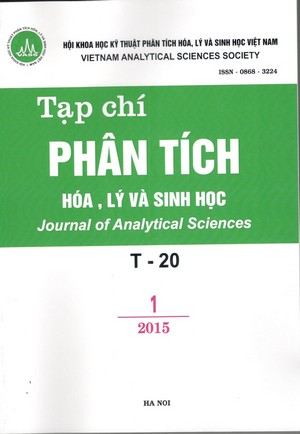DETERMINATION OF PeCB IN THE WASTE FROM INDUSTRIAL INCINERATOR
Abstract
PeCB is a highly toxic organic substance, very harmful to human health, even when existed in a small amount in the environment. In this study, waste ash of four industrial incinerators, including Nam Son medical and domestic waste incinerator (Soc Son, Ha Noi); Nam Son industrial waste incinerator with capacity of 2000 kg/h at Nam Son solid waste processing complex; domestic waste incinerator of Hung Hung MTX Co., Ltd, Bac Ninh and domestic waste incinerator of Hai Duong MTX 2 Co., Ltd. was collected and analyzed for determination of PeCB content. The PeCB sample are extracted by Soxhlet method (EPA - 3540C), with mixed acetone/n-hexane solvent in 16 hours at 6 rpm. The extracted fluid was led through the column made of silicagel-activated carbon and then eluted with mixed DCM/n-hexane solvent to eliminate the influence of organic and colored compounds. The influence of precipitated sulfur (in the extracted fluid after being concentrated) was removed by employing the copper powder. PeCB was analyzed by GC-2010 (Shimadzu) with the ECD and capillary column SPB-608TM of 30m×0,25mm×0,25µm. The quantification and detection limits of the method are 1,5 µg/kg and 0,5 µg/kg, respectively. The analysis results show that the PeCB contents in the ash of the four incinerators vary from 0,02 mg/kg to 0,22 mg/kg. This indicates that the emission of PeCB (in various types and at different levels) to the environment depends not only on feedstock, but also on the burning procedure. Therefore, it is essential to appropriately manage the equipment and technology during the waste burning process.
Keywords: PeCB, dichlometane (DCM), acetone, incinerator, waste

